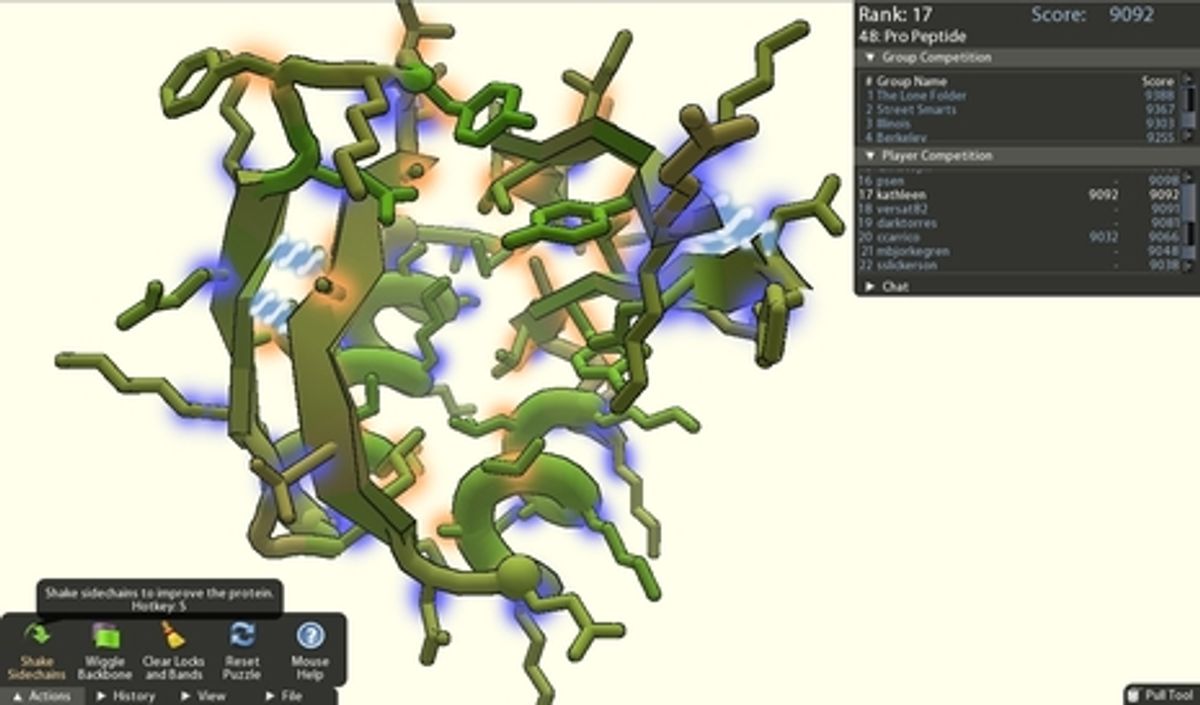Even with advanced technologies, such as nuclear magnetic resonance spectroscopy, deciphering protein structures can be difficult. A few years ago, researchers at the University of Washington decided to enlist the help of citizen scientists by turning the structure discovery process into a spatial reasoning game. The game, called Foldit, became an international phenomenon, attracting thousands of players.
The University of Washington team was so impressed by the Foldit players' performance that they presented them with an AIDS-related protein that had stumped researchers for years. The players, working together in online teams, figured out the structure of the protein in a matter of weeks. The results were published this week as a brief communication in Nature Structure & Molecular Biology. The researchers believe that it's the first instance of online gamers solving a longstanding scientific problem.
It's a big victory for proponents of citizen science, but it's also important to realize that this kind of success rarely happens automatically. It has taken continuous tinkering to optimize the game so that players without any background in biochemistry can use it effectively. Without these tweaks, Foldit might have been a fun game, but it probably wouldn't have contributed to science in the same way.
Image, Foldit, University of Washington



